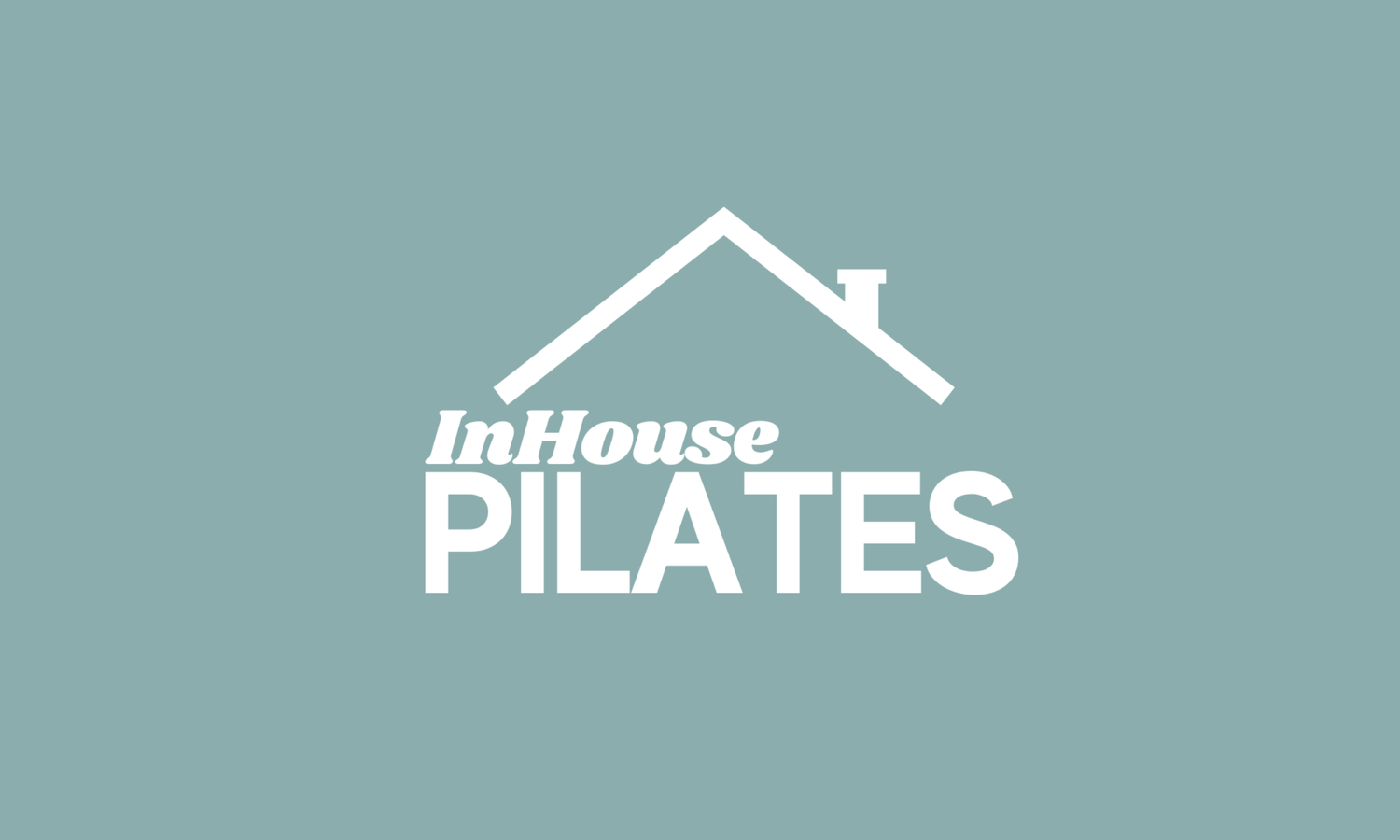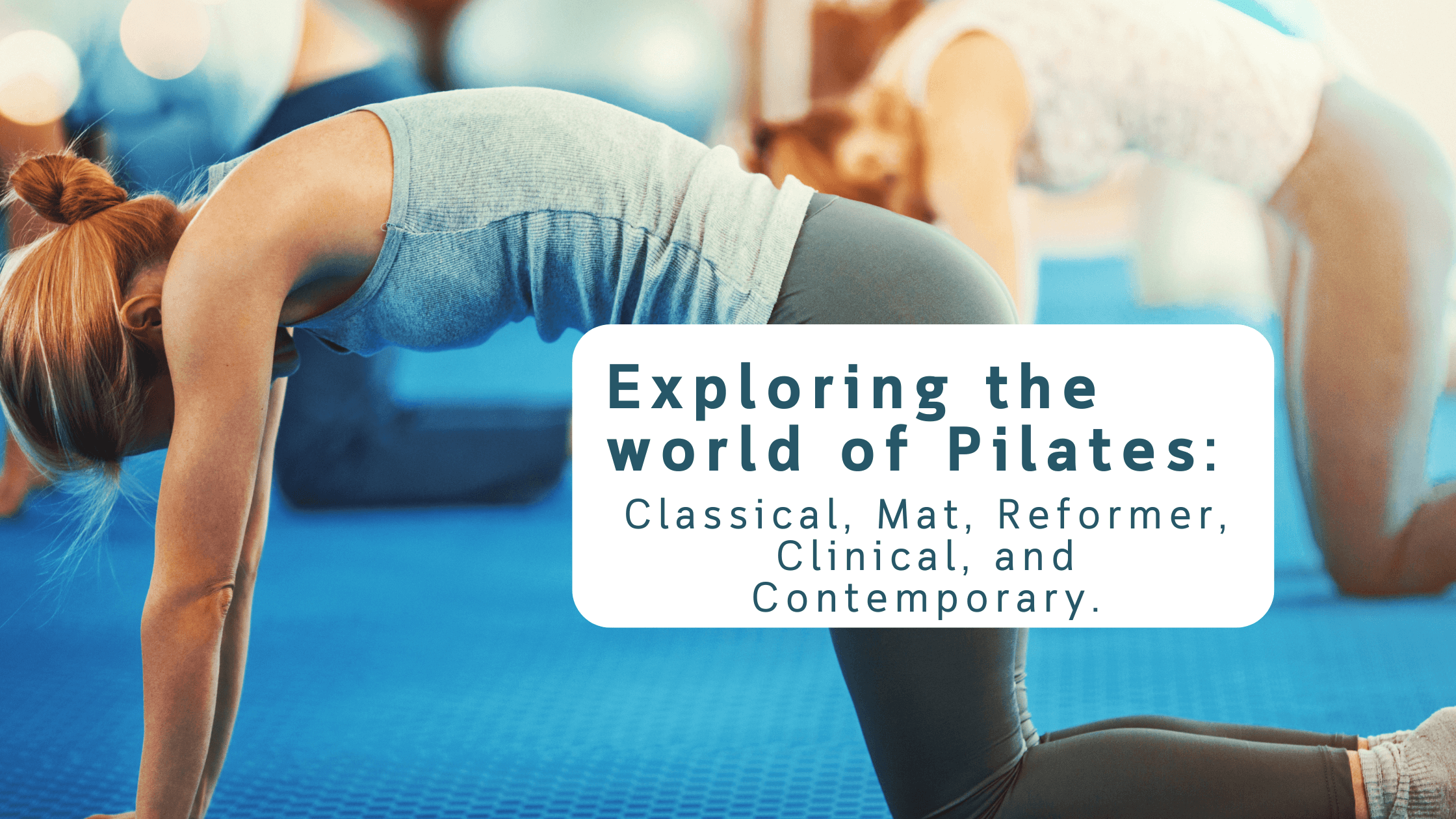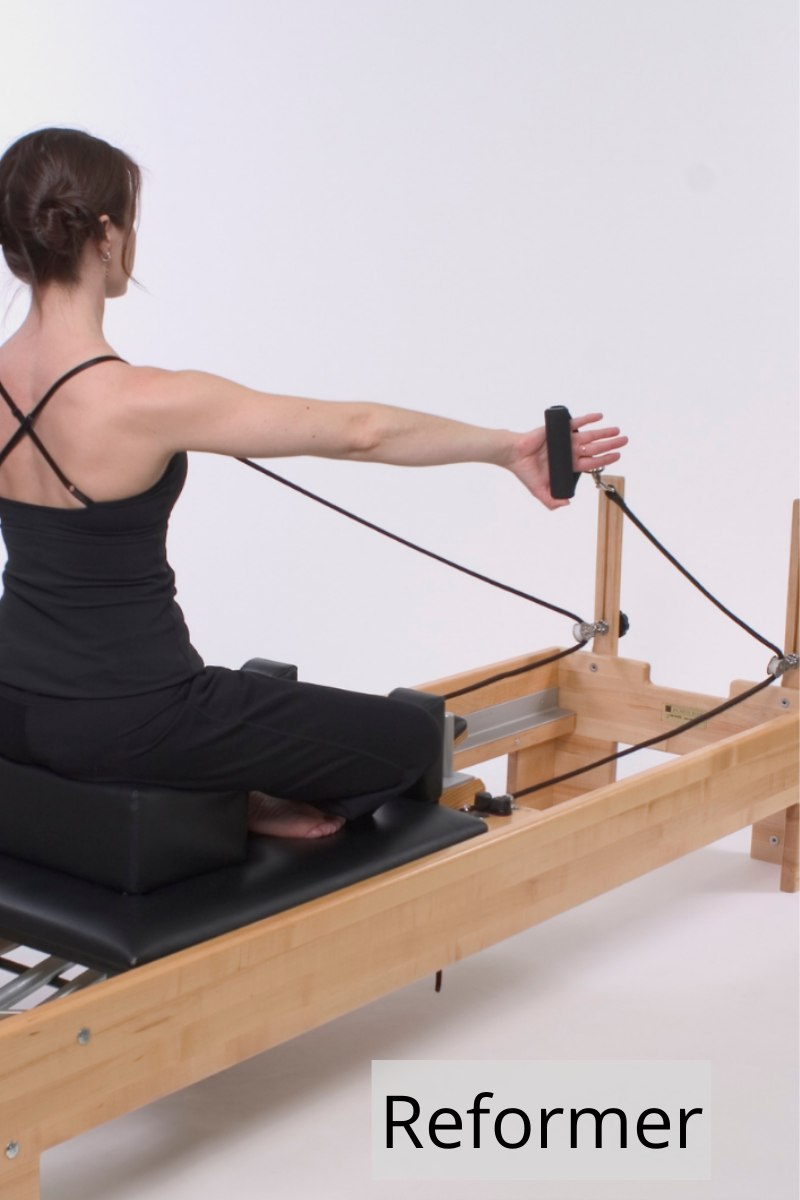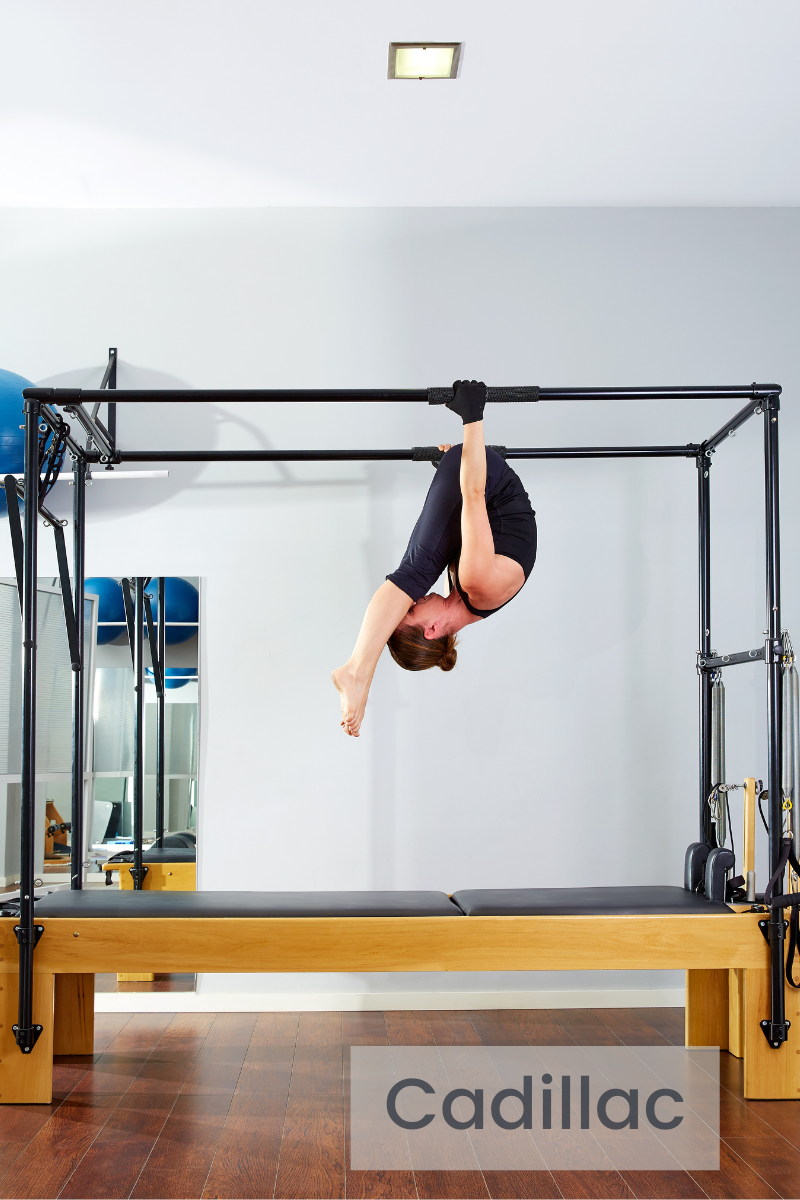Exploring the world of Pilates.
Looking at the various types of Pilates: - Classical, Mat, Reformer, Clinical, and Contemporary.
There are various types of Pilates classes.
But which one is right for you?
1. Classical Pilates
Derived from the Pilates creator himself, Joseph Pilates, in the 1920s.
Classical Pilates aims at preserving his original teaching and is usually done in a specific order, each exercise building on the one before.
Classical Pilates is also known as Traditional Pilates, Authentic Pilates, and Roman Pilates.
This type of Pilates is usually done in a fully equipped studio, combining both mat and apparatus.
2. Mat Pilates
The basic of all Pilates, as the name says, this style of Pilates is done on the floor using a mat and can be done without any apparatus.
There are 34 original Pilates Mat exercises as published In 1954, in Joseph Pilates’s book “Contrology”
The hundred
The roll-up
The rollover
The one-leg circle - (Single leg circle)
Rolling back - (Roll like a ball)
The one-leg stretch - (Single leg stretch)
The double leg stretch
The spine stretch (Seated spine stretch)
Rocker with open legs (Open-leg-rocker)
The corkscrew
The saw
The swan
The swan-dive
The one-leg kick (Single-leg kick)
The double-leg kick
The neck pull
The scissors
The bicycle
The shoulder bridge
The spine twist or ‘Seated spine twist”
The jack-knife
The teaser
The hip twist with stretched arms
Swimming
The leg-pull - front (Front leg-pull)
The leg-pull (Leg-pull back)
The sidekick kneeling (side-leg series)
The side bend (Mermaid)
The boomerang
The seal
The crab
The rocking
The control balance
The push-up
Small apparatus can be added to assist or challenge Mat Pilates exercises.
Each exercise can be further broken down into many more sub-exercises.
Mat Pilates is usually considered the most difficult type of Pilates, as you do not have the pulley system of the Reformer assisting you.
Mat classes are usually done in a group class form in a studio, or online via live-streaming classes as offered by InHouse Pilates.
Mat Pilates is more affordable than any other form of Pilates, but you should ensure that the classes you attend are under 10 participants, otherwise, you will not be corrected or have any personal attention, which really is a waste of your money and your time.
As a Pilates Instructor, I recommend that everyone should start off with Mat Pilates, as it teaches you the Pilates basics and then you can apply those principles to all the other apparatuses like the Reformer, Cadillac, Wunda Chair, Barrel or the Arc if you would like to.
3. Reformer Pilates
A Reformer is a piece of Pilates equipment that looks like a wooden bed, that can glide back and forth with the aid of springs to either add resistance or reduce the amount of resistance on the pulley system.
Reformer classes offer a dynamic full-body workout through a series of exercises using the resistance springs.
Reformer classes can be done on a one-to-one basis or as a group class.
Many of the Reformer exercises are similar to the Mat exercises but have their own set of exercises unique to the Reformer.
4. Clinical Pilates
Clinical Pilates is usually done in the presence of a Physiotherapist, using either band, Cadillac, or Trapeze as it is also known, a Reformer, or other apparatuses.
5. Contemporary Pilates
Also called Contemporary Studio Pilates is usually a fusion of other forms of exercise like yoga, fitness training, rehabilitation, and sports training.
Larger apparatus such as a Cadillac (Trapeze.) Wunda Chair can be used, combined with small apparatus like balls, foam rollers, and bands to add resistance, improve mobility and flexibility.
Classes are usually kept small (4 - 10 people) for individual focus.
Common goals across Pilates types: Mobility, core strength, balance
Pilates Principles: Breathing, Concentration, Centering, Control, Precision, Flow
Regardless of which type of Pilates you choose to meet your needs or goals, each of the above Pilates types has the common goal; to improve mobility, strengthen the core, keep the spine flexible, overall balance and maintain the basic Principles of breathing, concentration, centering, control, precision, and flow. (Read more about each principle here.)






